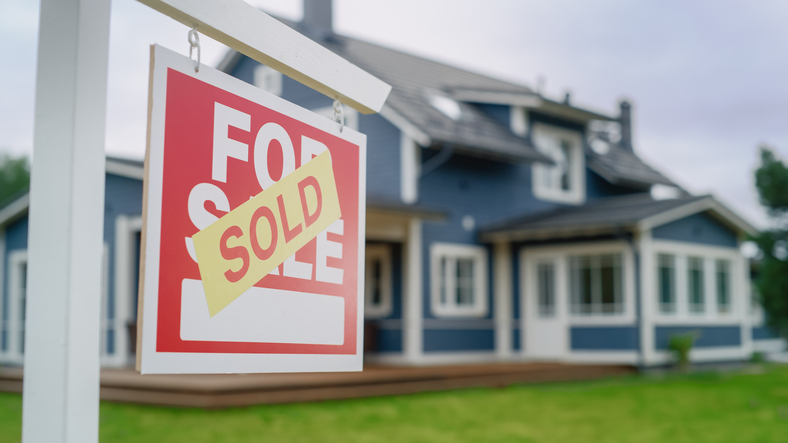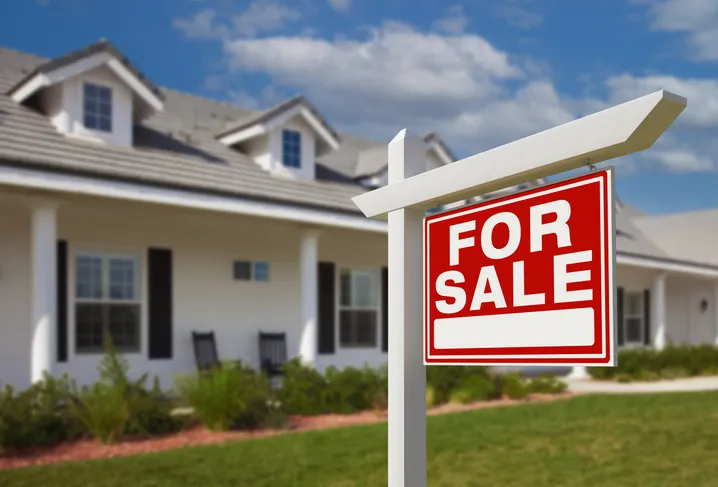Buying a $500,000 house typically requires a steady income, but the exact amount depends on your down payment, credit score, debts and mortgage terms. Many lenders follow the 28% rule, where your monthly housing costs (including mortgage payments, taxes and insurance) should stay under 28% of your gross income. With good credit and a 20% down payment, a homebuyer may need over $145,000 in annual income to afford a $500,000 home.
Buying a home is a major financial decision that requires significant planning. Consider speaking with a financial advisor to see how the purchase will impact your broader financial picture.
What a $500,000 Mortgage Looks Like
A $500,000 home purchase doesn’t mean a $500,000 loan. With a 20% down payment, the loan amount drops to $400,000. At a 7% interest rate on a 30-year fixed mortgage, principal and interest payments come out to roughly $2,660 per month. However, that’s before adding property taxes, homeowners insurance and possibly private mortgage insurance (PMI).
Property Taxes and Homeowners Insurance
Taxes and insurance vary by state and city. For example, the typical homeowner in the United States paid 0.90% in property taxes in 2024, according to a SmartAsset analysis of national home values and tax rates. However, the median property tax bill in New Jersey was $9,345 that year, more than 13 times greater than the median tax bill in Alabama ($701).
Applying a 0.90% property tax rate to a $500,000 home would add $375 to the principal and interest payment, bringing the monthly housing payment to approximately $3,035, before insurance.
Meanwhile, homeowners insurance premiums have risen dramatically in recent years. According to a report from the Consumer Federation of America, homeowners with mid-range credit and a $350,000 replacement value policy saw their premiums increase up by average of $648 between 2021 and 2024, reaching approximately $3,300 per year ($275 per month) 1 . This is in line with an analysis from digital insurance agent, Insurify, which found that the average homeowners insurance cost in 2024 was $3,259 2 .
A $500,000 home would require a higher replacement value policy, which could lead to proportionally higher premiums. Based on the Consumer Federation of America average, annual premiums for a $500,000 home would be approximately $390 per month, although actual costs will vary based on location, construction costs and insurer pricing.
As a result, the mortgage for a $500,000 home with a 20% down payment, a 7% interest rate, plus property taxes and homeowners insurance, would cost approximately $3,425 per month. To afford this payment, a household would need to earn approximately $147,000 per year (using the 28% rule).
Again, this is simply a hypothetical example to illustrate how to potentially calculate the income needed to afford a $500,000 home. A number of variables will ultimately dictate how much home you can afford.
Private Mortgage Insurance
PMI is typically required by lenders when a buyer puts down less than 20% on a conventional loan. It protects the lender, not the borrower, if the loan goes into default. PMI premiums are added to the monthly mortgage bill and usually range from 0.5% to 2% of the loan amount annually. In many cases, you can cancel PMI once you reach 20% equity in the home through payments or appreciation.
Down Payment Scenarios and Their Impact

The amount you put down upfront affects more than just your loan balance. Your donw payment also influences your monthly payment, mortgage insurance requirements and a lender’s view of your overall application. A larger down payment can reduce your financial risk in the eyes of a lender. On the other hand, a smaller one can make homeownership more accessible but potentially more expensive over time.
20% Down
With a $100,000 down payment, you avoid PMI and reduce your monthly payments. This is often the cleanest path to qualifying for a conventional loan, since it signals financial stability and lowers the lender’s risk. You also start with more equity in your home, which can make it easier to refinance or sell later.
5% to 10% Down
Lower down payments make it easier to enter the market but raise your monthly costs due to a larger loan and added PMI. Lenders may also apply more scrutiny to your income, credit and existing debt to offset the added risk.
Zero-Down Loans
Some programs, like VA loans for eligible military borrowers or USDA loans for qualifying rural properties, allow zero-down-payment options. While they lower upfront costs, they often require borrowers to meet stricter eligibility guidelines, such as geographic or service-based criteria. These loans may include additional fees (like VA funding fees) or slightly higher interest rates compared to conventional loans with down payments. Monthly payments can still be substantial, especially once taxes and insurance are factored in.
How Debt and Credit Impact Income Requirements
Income alone doesn’t determine what you can borrow—debt matters too. Lenders use the back-end debt-to-income ratio (DTI) to evaluate total obligations. This ratio compares all monthly debt payments (including housing, credit cards, student loans and auto loans) to gross monthly income.
Someone with no debt may qualify for a $3,425 monthly mortgage payment on a $147,000 income. But with $800 in monthly debt (car, credit cards, student loans), that same buyer might need about $180,000 in income to qualify.
Credit score plays a role as well. Higher scores tend to yield lower rates, which reduce monthly payments and lower income requirements. A buyer with excellent credit might qualify for a better rate and save hundreds per month. A lower score, meanwhile, could lead to higher costs and stricter underwriting.
Estimating the Income You Need to Buy a $500K Home
The table below shows hypothetical examples to illustrate how down payments, interest rates and mortgage insurance affect monthly payments and the income needed to buy a $500,000 house. These scenarios assume insurance costs ($390 per month), property taxes (0.90%), no additional debts and a front-end debt-to-income ratio cap of 28%. Actual loan terms, interest rates, PMI costs and lender guidelines may vary based on credit score, location and financial profile.
| Scenario | Down Payment | Interest Rate | Monthly Payment | Income Needed |
| 30% down | $150,000 | 6.75% | $3,035 | $130,071 |
| 20% down | $100,000 | 7% | $3,425 | $146,785 |
| 10% down | $50,000 | 7.25% + PMI | $4,096 | $175,542 |
| 5% down | $25,000 | 7.50% + PMI | $4,403 | $188,700 |
Bottom Line

Affording a $500,000 home depends on more than just income. This purchase is shaped by loan terms, credit history, upfront cash and property location. Some buyers may qualify with a six-figure salary and minimal debt. However, others might need a higher income to account for monthly obligations, mortgage insurance or local tax rates. Running the numbers with real-world inputs can give a clearer view of what’s feasible based on your circumstances.
Homebuying Tips
- A financial advisor can help you evaluate how a home purchase fits into your long-term goals, analyze your cash flow and assess the tradeoffs of using savings for a down payment. Finding a financial advisor doesn’t have to be hard. SmartAsset’s free tool matches you with vetted financial advisors who serve your area, and you can have a free introductory call with your advisor matches to decide which one you feel is right for you. If you’re ready to find an advisor who can help you achieve your financial goals, get started now.
- Mortgage interest and property taxes may be deductible, but the benefit depends on whether you itemize. Estimate your after-tax housing costs under current tax law to understand the true cost of ownership.
Photo credit: ©iStock.com/Feverpitched, ©iStock.com/gorodenkoff, ©iStock.com/phakphum patjangkata
Article Sources
All articles are reviewed and updated by SmartAsset’s fact-checkers for accuracy. Visit our Editorial Policy for more details on our overall journalistic standards.
- Cornelissen, Sharon, et al. “Overburdened · Consumer Federation of America.” Consumer Federation of America, 8 Apr. 2025, consumerfed.org/overburdened/.
- “Report: Home Insurance Rates to Rise 8% in 2025, After a 20% Increase in the Last Two Years | Insurify.” Insurify, https://insurify.com/homeowners-insurance/report/home-insurance-price-projections/. Accessed 8 Jan. 2025.
